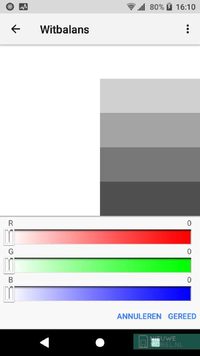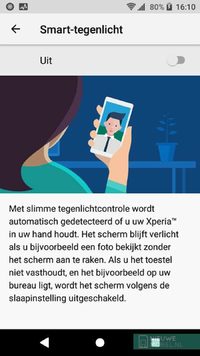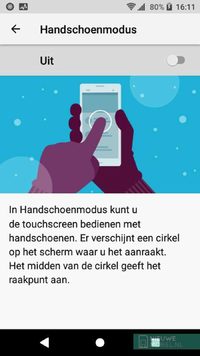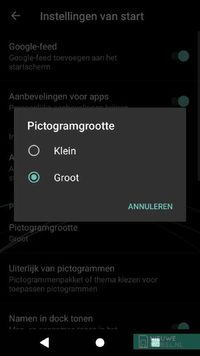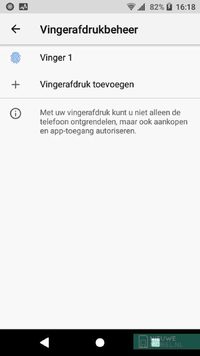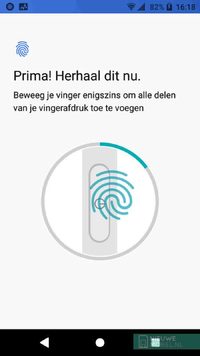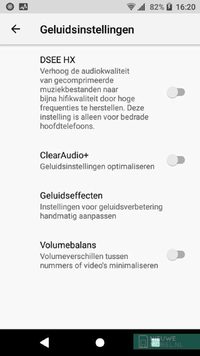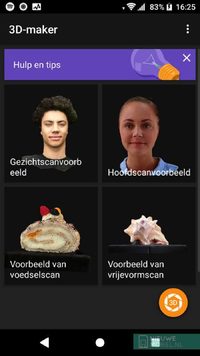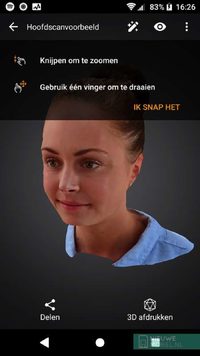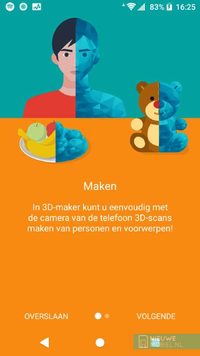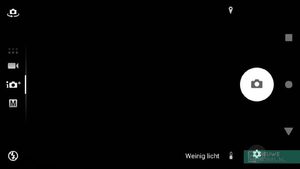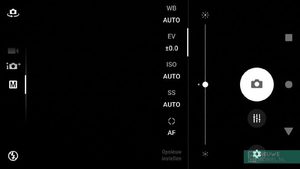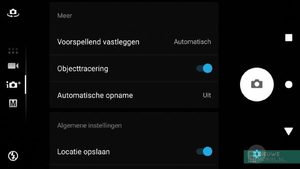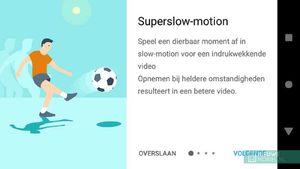Sony Xperia XZ1 Compact review
A mouthful, not a handful
If you are looking for a small Android phone with solid specifications, Sony is the right choice for you. The Japanese latest creation in this field is the Xperia XZ1 Compact.

Sony's name is not really easy to follow these days, but this is indeed the compact version in the high-end series with the accompanying powerful hardware. For some time now, Sony has been virtually the only manufacturer that takes compact and premium Android phones seriously. With the Xperia X Compact they took a slightly different approach, but with the XZ1 Compact they are picking up the pieces again.
Content of the box
Charger (model UCH20)
USB C cable
Quick start guide
It is therefore equipped with largely the same properties as the much larger XZ1. Think for example of the same 19 megapixel camera, Snapdragon 835 processor and also the battery has the same capacity of 2,700 mAh. On paper, this little brother should be able to measure up to the bigger competition.
Design
It has been said before but the design of Sony devices hasn't really changed for quite some time. However, you do see small improvements with every new model series. For example in material use and build quality. For example, this compact model is now water-repellent. Yet there is really nothing spectacular or striking about the design of the XZ1 Compact. Or it has to be how minimalist and sleek the design is. With the exception of slightly shiny edges at the top and bottom and around the camera lens, all the metal on the device is shrouded in a matt colour.

Except for the Gorilla Glass 5, which covers the entire front, the unit consists entirely of metal. The sides merge seamlessly and with a nice rounding into the back, but two separate plates cover the top and bottom. The finish is somewhat industrial with sharp edges. At the front they also protrude a little further. This can be done to protect the glass when you put the phone with the screen facing down on the table.

Sony's design is characterized by, among other things, large bezels above and below the screen, but there is also plenty of empty space on the side. There are two slots in the glass above and below the screen for stereo speakers. A notification light has been hidden in the top left corner. The headset and USB-C connections are located at the top and bottom of the device respectively. On the left hand side there is a large flap behind which the SIM card and microSD card can be inserted into the device.

The placement of the buttons on the right side is noteworthy. The power button containing the fingerprint scanner is located in a place that is almost completely covered with your finger when you are holding the device. This makes it almost impossible to unlock the phone without having to hold it otherwise. The volume key is actually in a more ergonomically comfortable place for the power button. What's more, it is so small and sits so low that you're quickly inclined to see it in front of a power button. If you are used to this function from a previous device, it takes some getting used to. The physical camera button is in its usual and convenient place.

The not insignificant thickness of 9.3 millimetres is even more striking due to the compact size of the XZ1 Compact. Yet the device does not feel bulky or heavy and lies well in the hand. In addition, the thickness gives the XZ1 a much needed grip because the metal offers little grip.
Performance
The XZ1 Compact has the same battery capacity as the "regular" XZ1, but with the smaller screen it should of course last considerably longer. In this respect we were not disappointed because we easily came up with a usage time of 2 to 2.5 days with a screen on time of more than 8 hours. The XZ1 Compact has support for quick charging but unfortunately no quick charger is included.
".
Of course Sony's (Ultra) Stamina mode is also available again. The regular Stamina mode limits the device performance and certain functions. This can be done at three different limitation levels. The mode can automatically turn on at an adjustable battery level, but it can also warn you if it thinks the battery won't last until the next charge. Ultra mode disables internet connections and only lets you use a very limited number of apps. There is also a battery care option available. This should extend battery life by limiting the battery to more than 90% charge for a longer period of time. To do this, however, you need to charge and disconnect your phone at approximately fixed times so that the system can learn to do this.
".
It happened once that our device became very hot and the battery was draining remarkably fast. We could not find a cause for this. There was no noticeable app or system function in the battery usage overview. The problem was rectified after we restarted the device.
Like the larger XZ1, the Compact is powered by the Snapdragon 835 processor. This is currently the most powerful processor Qualcomm can supply and also the top models of most other manufacturers are equipped with it. This means that the XZ1 Compact can easily compete with "bigger" guys.
".
The XZ1 Compact has 32 GB of storage memory, which is not exactly generous these days. More than 9 GB is taken up by the system software and with a bit of installing apps you will soon be on a half full memory. So you will soon need the memory lock.
Screen
Despite Sony being the first to equip a mobile phone with a 4K screen with the Z5 Premium and XZ Premium, the Compact still has a very modest HD screen. With a diagonal of 4.6 inches, this is indeed sufficient, but you would think that in the meantime it is also possible to take a step up at this point.
".
The screen also delivers excellent image quality with vivid colours and good contrast reproduction. This is made possible by the Triluminos technique which, in the standard mode of displaying the colour range and contrast, gets the best out of the screen. This is hardly inferior to a good AMOLED display. The image in super-life-mode is not really usable. White balance can also be set separately and there is a video image enhancement option. The automatic screen brightness is sometimes a bit too bright but dims well in really dark conditions.
".
The XZ1 Compact does not have a function that briefly illuminates the screen when a new notification is received. This is standard in Android and it is a bit of a shortcoming that Sony took it out.
Software
Unlike its big brothers, the XZ1 Compact runs out of the box on Android 8.0 Oreo. That makes it one of the first devices to come out with the latest version of Android and Sony certainly earns credits for that. What's more, Sony doesn't adjust the look of Android very thoroughly anymore. Unfortunately, they have not yet implemented the new design of Android for the look of the start screens and the application menu, but they have stuck to that of a few years ago. This does not mean that it does not work well, but Sony has to be careful that the interface does not look out of date.
The size of the grid for the start screens and the application menu is 4x5 by default. This can be reduced or enlarged to 5x5 and that fits easily on the screen of the XZ1 Compact. The icon size can be selected from two formats.
There are always a significant number of Sony apps installed on their devices by default. On the XZ1 Compact these include Xperia Lounge, Movie Creator, News, PlayStation, Video and What's New. The added value of this is variable to say the least. Although we are not necessarily waiting for this, it can be justified to a certain extent, because this is how a manufacturer tries to make his devices stand out and possibly add something to Android. However, the fact that apps from third parties, such as Amazon Kindle, Amazon Shopping, AVG Protection, Spotify and Facebook, are being forced on you is a lot more disturbing to us. In addition, none of these apps can be removed from the device.
".
Hardware
Apart from the fact that Sony's fingerprint scanner is in a rather unusual place, it also works just a little bit differently than most other phones. You have to press it first to be able to use it. In the beginning this didn't work very well for us but after a while the scanner seemed to learn and after a while it worked a lot more often. Disadvantage of processing the fingerprint scanner in the power button is that it becomes difficult to see your messages on the lock screen without unlocking the phone directly.
Fortunately, Sony has used the space above and below the screen to incorporate stereo speakers. The sound they produce is not so loud, but nicely full and does not suffer from distortion at the highest setting. There are also extensive options in the settings from which you can choose to optimize the sound.
The external vibrator of the XZ1 Compact is a bit of a special case. It vibrates briefly and intensely but actually makes more noise than it can be felt.
".
New to the XZ1 devices is the 3D maker that lets you capture people and objects in 3D. The app has 4 capture modes including head scanning, face scanning, food scanning and free scanning. 3D recordings can then be sent to someone as a sticker or directly to a 3D printer. It is very difficult to make a good scan. You almost need professional lighting and a stabilizer to hold the camera. If you don't have this, the camera often gives error messages during scanning and its scans are often incomplete, causing objects to be distorted or have large scars. Whether a scan is really suitable for 3D printing is also not checked properly. For example, many printers can't get away with hollow spaces and protruding parts. All in all, it remains a bit of a gimmick.
Camera
The XZ1 Compact is equipped with the same camera as the XZ1. This so-called Motion Eye camera we found earlier in the XZs and the XZ Premium and enables you to shoot super slow motion videos of almost a thousand frames per second. The camera can be activated by holding down the camera button for a moment or pressing the power button twice. Then the superior automatic mode opens. As standard, photos are taken here in a 16:9 aspect ratio with 17 megapixels. To use the maximum 19 megapixels, you will need to use the 4:3 aspect ratio.
In the interface a shutter button is visible and in the corners buttons for the selfie camera, photo album, settings and flash. By swiping the image you can switch to manual mode, video and camera apps. In manual mode settings, HDR can be enabled manually. Furthermore, focus, shutter speed, brightness and white balance can be adjusted.
For photos in automatic mode, the options include the ability to capture predictive. Exactly what this means is not immediately clear, but after some research it turns out that the camera takes several pictures of moving subjects. The best option can then be chosen from two to four options. The self-image camera has a wide angle lens with a maximum angle of view of no less than 120 degrees. In this way, large groups of people or a wide landscape also fit into the picture. It is also possible to switch to a smaller frame for the more traditional selfie.
In video mode, the slow motion function can be accessed by pressing the button next to the recording button. The camera actually has three slow-motion modes. You only discover this when you open the settings. In addition to normal slow-motion, there are two modes for superslow-motion; one to record directly in superslow-motion and one to capture a fragment in superslow-motion during normal filming. Filming in superslow-motion takes place at 960 frames per second and takes less than one second. This is also necessary because with such a frame rate and filmed in HD, the files would otherwise become far too large.
.
With so many functions, the results of the camera are quite diverse. With sufficient ambient light, the camera focuses quickly and the photos are fine. Colors look fresh and details are nicely displayed. However, there can be some exaggerated focusing. There is no optical image stabilization for photos, which is sometimes noticeable in less well-exposed conditions. Then the necessary noise quickly creeps into the image. For video, however, there is electronic image stabilization. For a good superslow-motion shot you need to have very good timing to start recording at exactly the right moment.
Conclusion
In recent years we have mainly used devices with screens of 5 inches or larger and it takes some getting used to using the XZ1 Compact. The limitations of the small screen are especially noticeable in apps like Twitter, Facebook and Google Maps. However, the extensive recording functions are also a bit congested with such a screen. At the same time, this is a reality that a buyer of a model like the XZ1 Compact will be aware of and may even be looking for.
Apart from that, the XZ1 Compact is a device that can easily compete with larger devices. They are not more powerful in terms of computing power and with its smaller screen, the XZ1 Compact has a better endurance. Yet the device is not an eye-catcher. This is because its looks on the outside and in the interface are not really on the level we are used to in 2017. The only innovative thing about the XZ1 Compact is the possibility to use it as a 3D scanner, but at the moment that is mainly a gimmick. It is also quite a hassle to keep the device still and move around an object that is also sufficiently and evenly exposed.
However, if you want a device with the capabilities of a flagship packaged in a more convenient shell that fits more easily in your pocket then you don't really have much choice and the XZ1 Compact will probably not disappoint you either.









